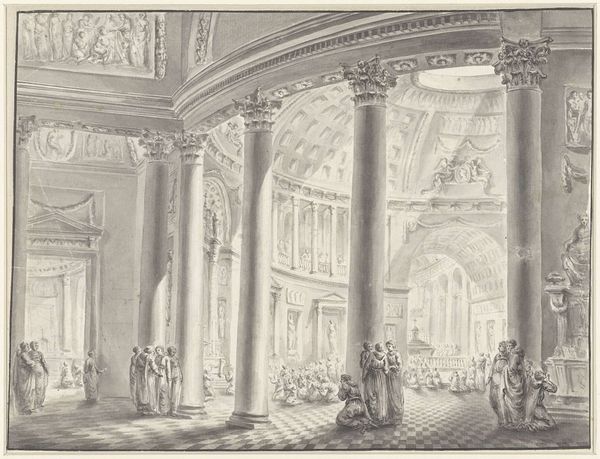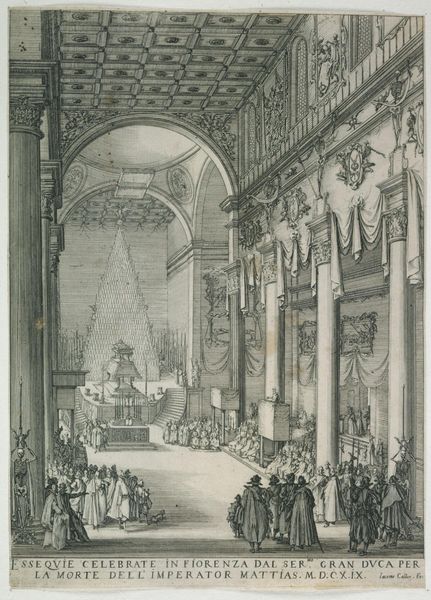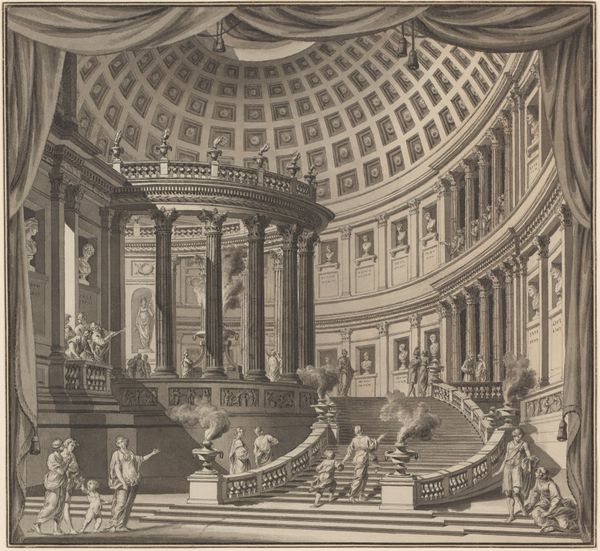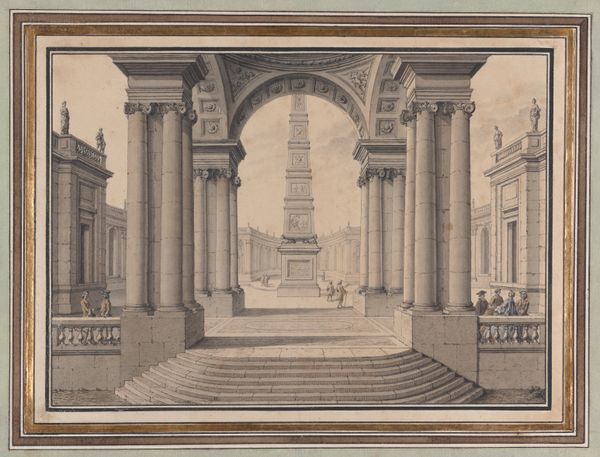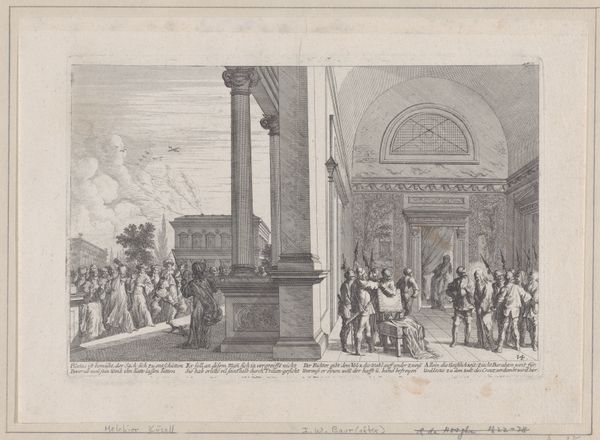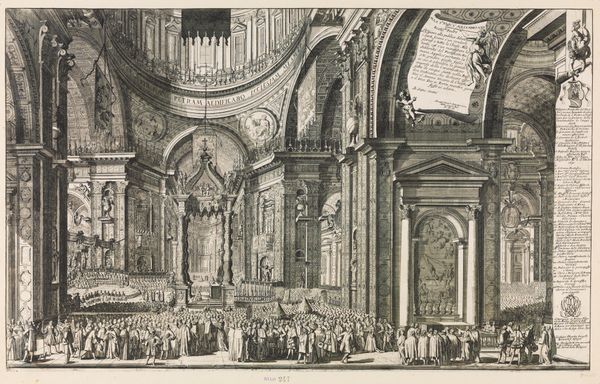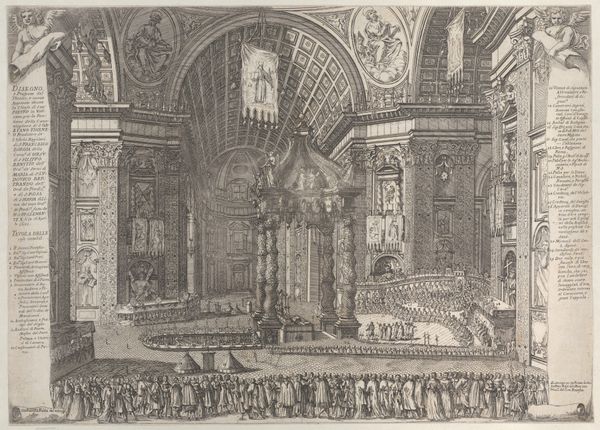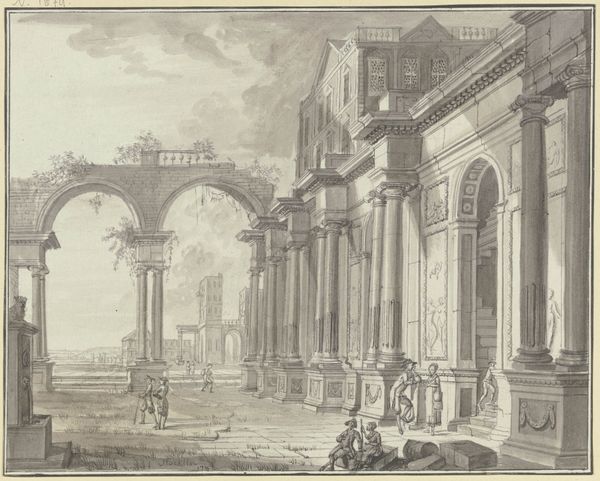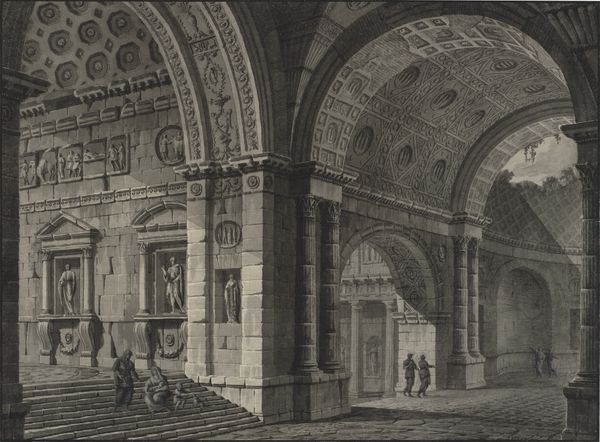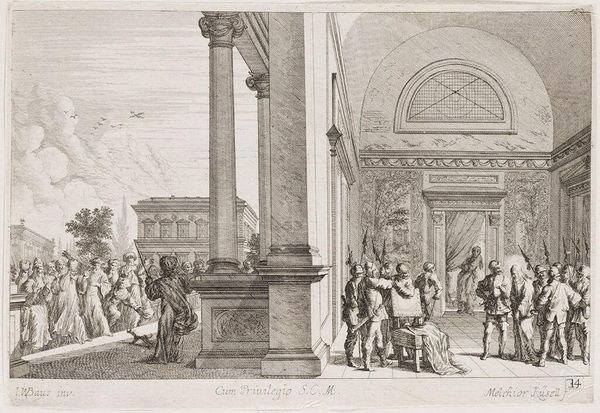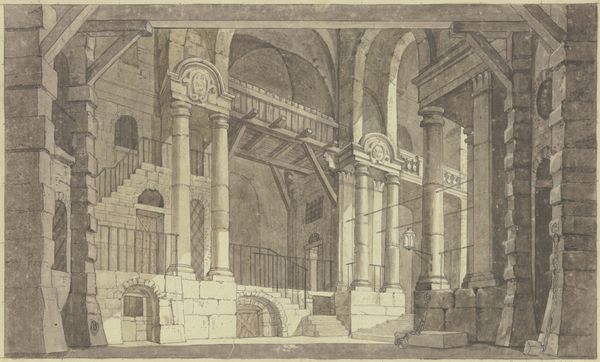
drawing, paper, ink, architecture
#
drawing
#
allegory
#
landscape
#
perspective
#
figuration
#
paper
#
form
#
ink
#
geometric
#
classicism
#
line
#
history-painting
#
architecture
Dimensions: height 224 mm, width 297 mm
Copyright: Rijks Museum: Open Domain
Curator: Jacques François Blondel's drawing, "Begrafenis in een gefantaseerd klassicistisch interieur"—"Funeral in a fanciful classicist interior"—conjures a scene both familiar and profoundly strange. Executed in ink on paper sometime between 1715 and 1774, its meticulous lines promise revelation. Editor: My first impression is one of austere grandeur. The scale is imposing, the architecture overwhelms the human figures, and yet there's a strange coolness, a lack of overt emotion given the subject matter. The monochromatic palette contributes to this feeling. Curator: Observe how Blondel orchestrates depth through the linear perspective. The eye is relentlessly drawn into the architectural recesses. Consider, too, the unwavering precision of line and the clear delineation of form—each column, each archway, speaks to a profound investment in order. Editor: Indeed, and I am drawn to the symbols Blondel employs: the imposing pyramid atop the tomb structure speaks volumes of the aspirations toward immortality, a kind of pharaonic ambition re-imagined within this neoclassical setting. And the solemn procession, bearing torches, are participants in ancient rituals, a kind of cultural memory re-enacted. Curator: Precisely, this fusion of styles—the Egyptian pyramid with Greco-Roman colonnades—presents a fascinating exercise in architectural syntax. The building elements coalesce to form a unique statement through pure form and historical citation. It's as though the artist is engaging in a visual debate. Editor: Absolutely. Beyond the architectural features, the human drama plays out using symbols from different cultures: there are pallbearers enacting funerary rites with what seem like Roman togas... or maybe I see echoes of Etruscan garments! The scene reflects humanity coming to terms with death, across history. It reflects on continuities as much as cultural specifics. Curator: A work which uses geometrical form, precise line, and a masterful use of perspective which rewards meticulous viewing and invites reflection on historical pastiche and structure in art. Editor: The drawing feels profoundly evocative, a journey into the depths of shared human symbolism through the ages, especially in regard to how cultures across time cope with mourning.
Comments
No comments
Be the first to comment and join the conversation on the ultimate creative platform.
